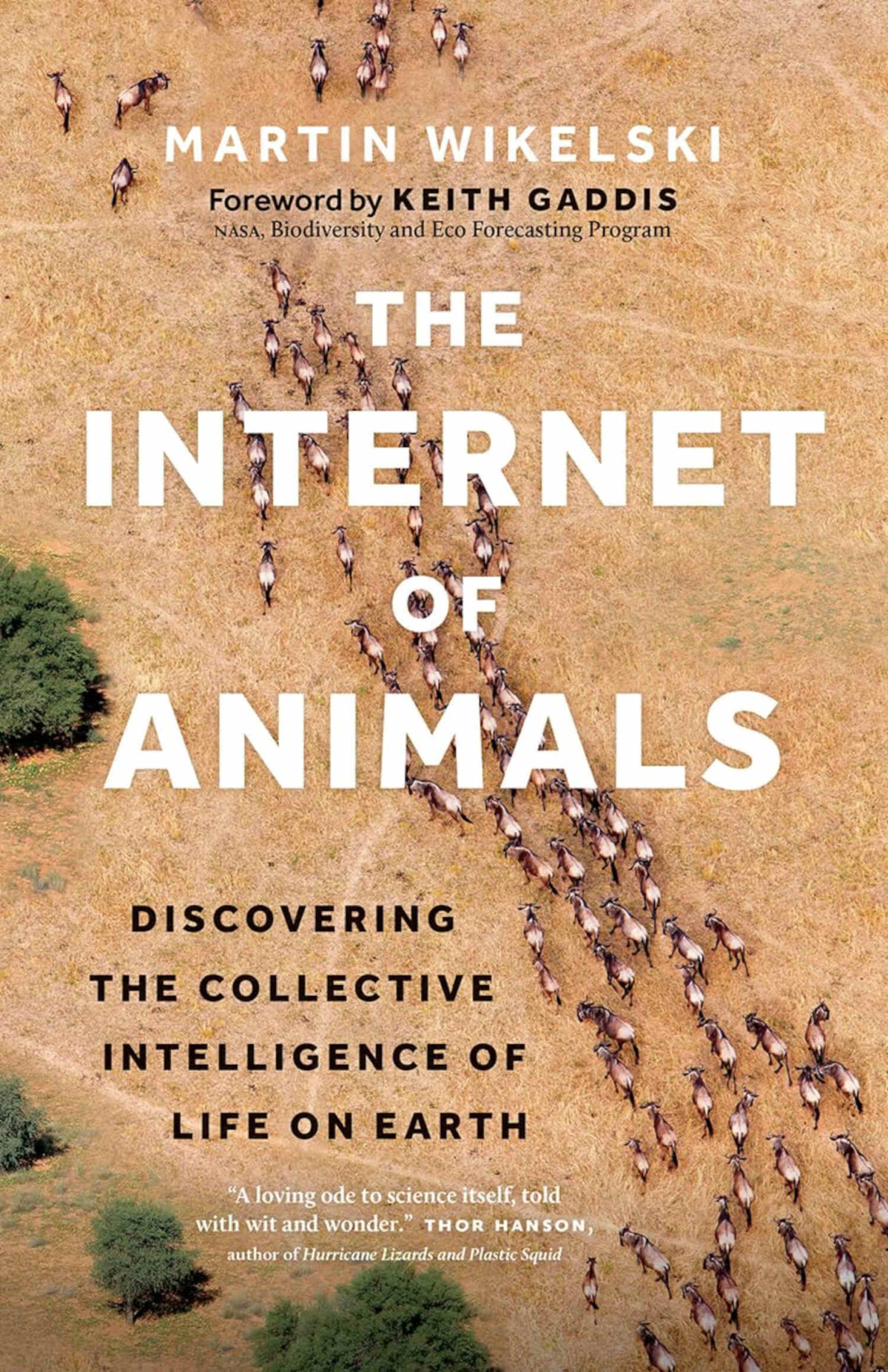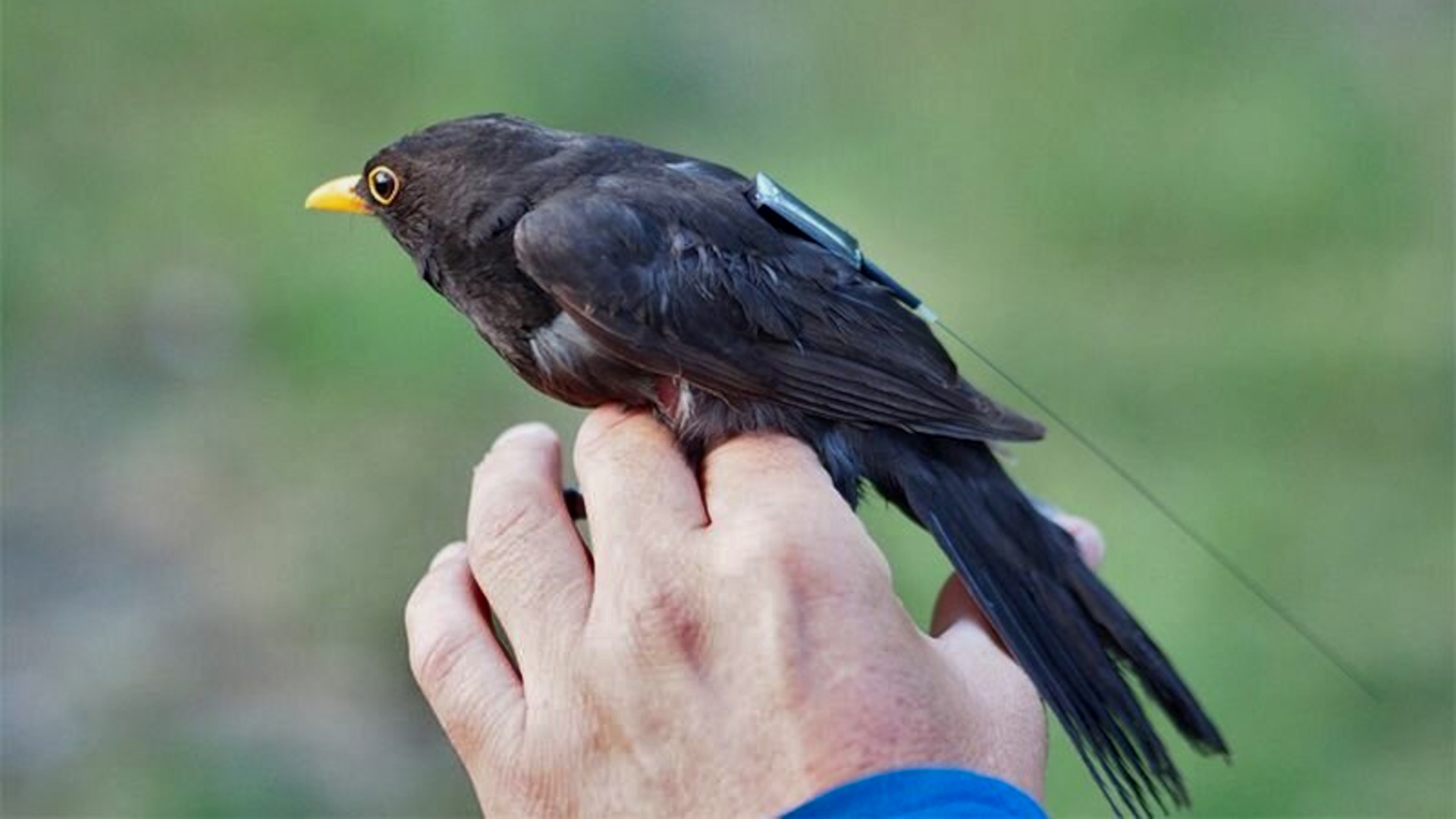In the spring of 2022, while conducting research for a book, I spoke with a bird biologist who was studying meadowlarks, a grassland species with a lovely melodic song that for me signals the onset of spring. The biologist was heading out to the field soon to tag the birds, fitting some of them with tiny transmitters that would let researchers track their movements over several years. With grassland birds faring poorly — and meadowlark populations in particular in steep decline — the project sought to find out where the birds were going each spring and fall. Were they returning to the exact same breeding sites year after year? Did they follow the same route? This data could help inform conservation planning.

BOOK REVIEW — “The Internet of Animals: Discovering the Collective Intelligence of Life on Earth,” by Martin Wikelski (Greystone Books, 272 pages).
But the work had hit a roadblock: The new, high-tech tags she and other scientists had been eagerly awaiting, developed in Germany and part of a system known as ICARUS, would not be arriving as planned. ICARUS, or the International Cooperation for Animal Research Using Space, had been built to work by communicating with the Russian module of the International Space Station. Russia’s invasion of Ukraine and subsequent scientific-iron-curtain drawing had scuttled the entire effort. The ICARUS team had gone back to the drawing board, redesigning their system to work without Russia, and it would be more than two years before the new tags were ready for use.
Our conversation left me amazed that field ecology in the eastern U.S. had intersected with war and geopolitics thousands of miles away. How could the lives of these yellow-breasted songbirds have anything to do with Vladimir Putin? It seemed so farfetched, and yet also a stark reminder of how interconnected the planet truly is.
Martin Wikelski understands this. He is the German scientist behind the ill-fated ICARUS transmitters, and he has spent nearly three decades trying to build an “internet of animals” — a network of sensor-wearing critters and the data they generate that can serve as a window for humans onto all manner of animal experiences. Wikelski’s new book, “The Internet of Animals: Discovering the Collective Intelligence of Life on Earth,” chronicles his quest to design, build, and launch this network. It’s a fascinating personal account of how science unfolds, how questions about biology and ecology can become tied up with space agencies and fascist regimes, and how years can fade into decades. An accomplished biologist, Wikelski is also an indefatigable entrepreneur and a great storyteller.
Wikelski’s quest to understand the hidden lives of animals took flight in the late 1990s at the University of Illinois Urbana-Champaign, where he was a young professor. Working with Bill Cochran, a wildlife biologist and basement tinkerer who pioneered the use of radio telemetry for tracking animals, Wikelski set out to understand what influenced songbird migration routes, and whether birds of different species were communicating with one another along the journey.
How could the lives of these songbirds have anything to do with Vladimir Putin? It seemed so farfetched, and yet also a stark reminder of how interconnected the planet truly is.
To do this, the two would set out across the Illinois prairie “on good migration nights,” waiting for the moment when the individual Swainson’s thrushes that Cochran had fitted with small transmitters and microphones took to the air. The researchers had turned their jalopies into labs on wheels: They sliced holes in the cars’ roofs, through which they inserted pole-mounted antennas. “We drove like tornado chasers behind a single bird each night,” Wikelski writes, “constantly rotating our antennas to determine where the bird was going and to receive the strongest signal possible. All we needed to do was speed after the thrushes while recording their sounds continuously.”
This gonzo research effort yielded breakthrough insights into how birds communicate: A bird would fly up to a certain altitude, call out, and listen for other birds’ responses. If the replies came, the bird would know it had found a good, safe pathway. The research, Wikelski writes, revealed “a highway in the sky, where birds were providing each other with key information on how high to fly, where to go, and who to follow.” This “ancient organic symphony,” he writes, is “created by animals as they exchange information across species and continents.” And it is high time, he argues, for humans to “tune in.”
Wikelski went on to work on a series of increasingly high-tech animal-tracking systems, evolving as technology advanced. With colleagues at the Smithsonian’s Panama-based Barro Colorado Island field station in the early 2000s, he developed a system called ARTS (automated radio telemetry system) that let scientists follow the movement of rainforest mammals, enabling biologists to “study who was eating whom, and where and when. We could immediately see when an agouti was killed by an ocelot, or when an agouti was carrying away a nut that had fallen to the ground under the mother tree.” As the data from tagged animals began to pile up, Wikelski and his collaborators created Movebank, an online “history of the living pulse of the planet.”
“We drove like tornado chasers behind a single bird each night.”
One evening in Panama in 2001, Wikelski was sitting outside with George Swenson, a legendary University of Illinois radio astronomer famous for designing the Very Large Array telescope, among other astronomical advances. Swenson told Wikelski he wasn’t thinking big enough. “You ecologists have a huge responsibility to the world and you’re not living up to it. You think too small, you don’t organize yourselves globally, and you don’t demand the instrumentation you really need to answer the questions governments and society at large ask — or should be asking.”
Swenson challenged Wikelski to “set up a scientific system designed to study animal life on the planet using satellites.” So Wikelski called Bill Cochran — his migratory-bird-chasing partner and a longtime friend of Swenson’s — and asked his “practical” advice. Cochran said such a system was possible, and that it could work by relaying data via the ISS. Thus was ICARUS born — with Wikelski’s prediction that it could be operational by 2005.
Wikelski’s book tracks the reality of the colossal effort to get ICARUS off the ground, which took not four but some 20 years. It went live in 2020, experienced technical issues in 2021, and culminated in February 2022, when just a single person’s signature was needed to get ICARUS back online. Then, Russia invaded Ukraine. Along with this arc, the book is also filled with charming anecdotes about animals and their underappreciated intelligence, like the Galápagos rice rats on Isla Santa Fé who understood that they could enter Wikelski’s tent — even crawl up his arms, nibble his fingers, and sit on his head — when he was alone on the island but not when the other, rat-hating, members of his field team were present.
Support Undark Magazine
Undark is a non-profit, editorially independent magazine covering the complicated and often fractious intersection of science and society. If you would like to help support our journalism, please consider making a donation. All proceeds go directly to Undark’s editorial fund.
Why is building an internet of animals so important that Wikelski has devoted decades of his career to it? The route we are on, particularly in the West, of viewing the natural world only in terms of what we can extract from it for our own gain, is a path to ruin. Wikelski believes the “next chapter in human evolution” is the Interspecies Age, where humans recognize that we are partners with other species, consider their needs when we make decisions, and “link the knowledge these other species have to our own knowledge.” Among many other benefits of this Interspecies Age, he says, will be the ability to draw on animals’ sixth sense to help us predict “when something big is happening in the environment” — a buildup of toxins in a landscape, the onset of an El Niño event, the emergence of a plague of locusts.
All these are important. My one gripe about “The Internet of Animals,” though, is that it places too much emphasis on what animals can tell us about things that might harm us — like predicting earthquakes — as opposed to what they can reveal about how our actions might be harming them. Perhaps this is simply a tool to convince a broad audience of the project’s potential. But the true value of an internet of animals goes back to the meadowlarks. If we don’t know what routes they follow, where they land along the way, what pitfalls — natural or human-made — may cause their journeys to end in tragedy, then we can’t work effectively protect the habitat, food, and other resources they need to survive. An internet of animals would help us see the currently invisible parts of our world — how animals distribute seeds, how they cope with the impacts of climate change, how they interact with one another when there isn’t anyone around to watch.
When a tree falls in the forest, it obviously makes a sound, whether humans are there or not. But what sound, exactly, and what happens next — who hides, who takes flight, who rushes in to grab and store the seeds, who loses a nest and must head off in search of a new home — are secrets that ICARUS might yet reveal. Learning these things could both open our eyes to the incredible hidden lives of our animal neighbors and move us to better protect the planet that sustains us all.
Hillary Rosner is a science journalist and the assistant director of the Center for Environmental Journalism at the University of Colorado, Boulder. Her work has appeared in the New York Times and National Geographic, among other outlets.










